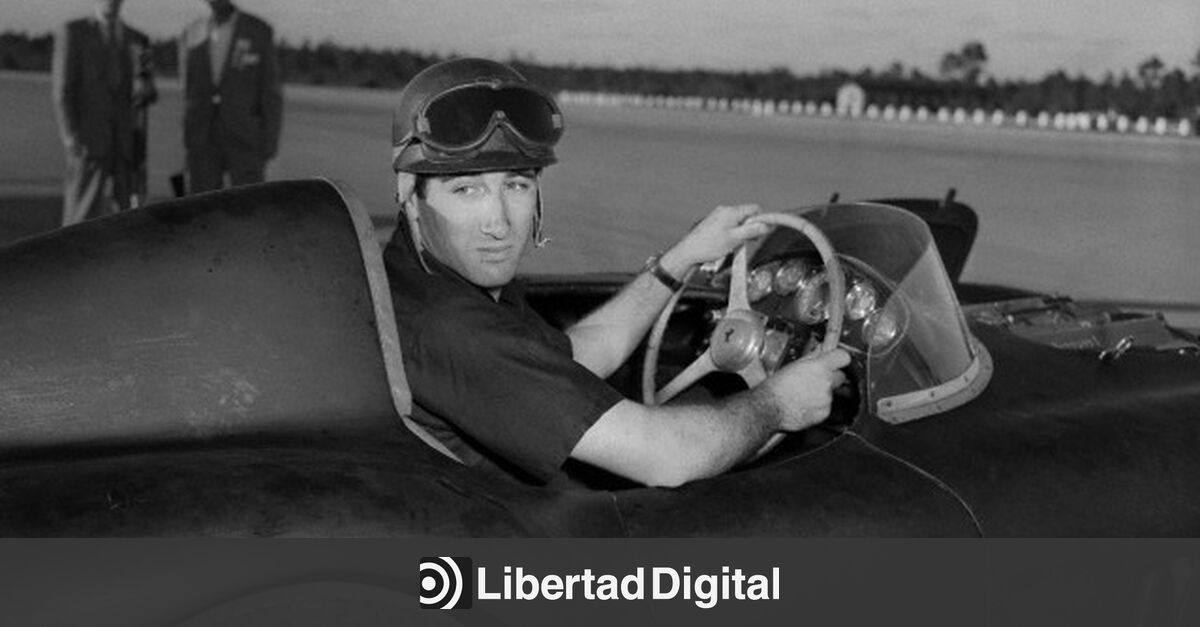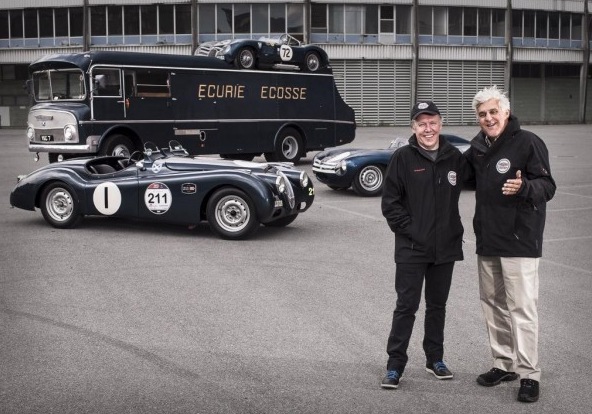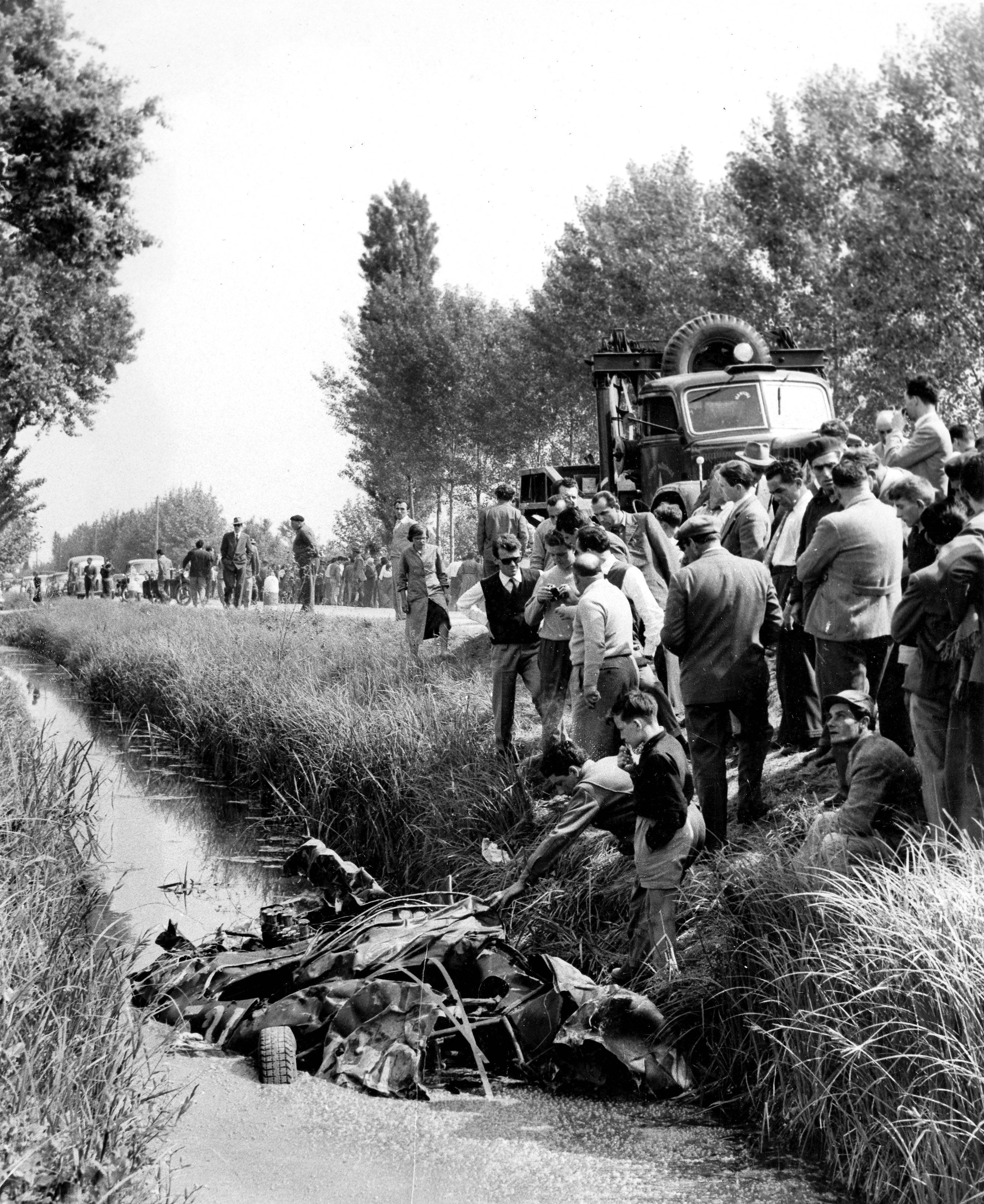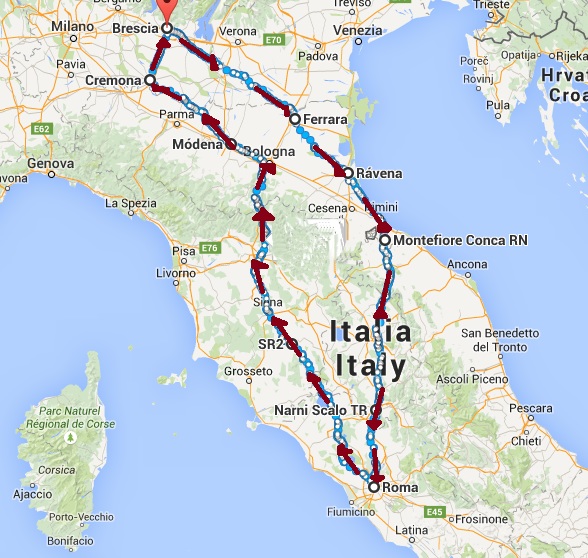
The Mille Miglia, a historic automobile race often described as “the most beautiful race in the world” by Enzo Ferrari himself, took place from May 14th to 17th. Over 400 vehicles participated in this recreation of the legendary race. Spanning 1,600 kilometers (nearly a thousand miles) round trip from Brescia to Rome, the route showcased the most beautiful cities in Italy, including Verona, Ferrara, Ravenna, Gambettola, Siena, Florence, Reggio Emilia, and Cremona. It was a breathtaking journey through the regions of Emilia-Romagna, Tuscany, Lazio, and along the stunning Italian coastline.
The Mille Miglia was initially a single race but is now divided into four stages: Brescia-Rimini, Rimini-Rome, Rome-Parma, and Parma-Brescia, which are competed over the course of four days.
This prestigious race brings together classic and vintage cars manufactured before 1958. Participants get the chance to witness iconic models such as the Jaguar C-Type, Mercedes-Benz 300 SL, Porsche 356 1500 Speedster, Alfa Romeo 1900 SSZ Super Sprint Zagato, and the Lancia Aurelia B20 GT 2500. The event attracts well-known personalities, including Brian Johnson, the lead singer of AC/DC, Scottish singer Amy Macdonald, actors Jeremy Irons, Adrien Brody, Luke Evans, television presenter Jay Leno, and the sons of Salvatore Ferragamo and José Carreras. Esteemed drivers like David Coulthard, Jackie Stewart, Bruno Senna, Martin Brundle, Jo Ramirez, Bernd Schneider, and Jacky Ickx have also participated.

Jay Leno (right) with Ian Callum at the 2014 edition of Mille Miglia.
The Mille Miglia pays an incredible tribute to a race that had a significant impact on the world of motorsports.
FAQs
How did the Mille Miglia originate?
The birth of the Mille Miglia can be traced back to the loss of the Montichiari circuit in Brescia as the host of the 1922 Italian Grand Prix. This agitated a group of automobile enthusiasts who sought to honor Brescia and revive the Italian automotive industry, which was going through a crisis. The four enthusiasts, known as “The Four Musketeers,” were Count Franco Mazzotti, Count Aymo Maggi di Gradella, ex-racing driver Renzo Castagneto, and journalist Giovanni Canestrini. On December 24, 1926, they gathered to discuss the crisis and concluded that only a new, prestigious race could bring about change. Count Mazzotti presented a map outlining a hypothetical route that would start from Brescia, pass through Rome, and return to the Lombardy city. This route covered 1,600 kilometers of mountain roads and fast straights across the plains, aptly named “mille miglia” in Italian. Only three months later, the organizers launched the first edition of the race, won by Ferdinando Minoia driving an Officine Meccaniche (OM) car.
The Mille Miglia took place on public roads to allow fans to get close to their racing idols. The race’s success caught the attention of Mussolini’s regime, leading to its inclusion in the official Italian race calendar from 1928. The most prominent Italian car manufacturers, such as Alfa Romeo, Lancia, Fiat, Maserati, Ferrari, Bugatti, Mercedes, BMW, Talbot, Cisitalia, Jaguar, Aston Martin, and Porsche, began participating in the race.
Notable editions of the race include the epic duels between Tazio Nuvolari and Achille Varzi from 1930 to 1934, the 1948 race that marked Nuvolari’s final appearance before retiring, and the 1955 edition historically won by Stirling Moss in a Mercedes 300 SLR. The Mille Miglia was not held in 1939 and between 1941 and 1946 due to World War II.
What happened during the tragic accident?
In the twenty-fourth edition of the race held on May 12, 1957, tragedy struck. Until that point, everything had been going smoothly. Alfonso Antonio Vicente Eduardo Ángel Blas Francisco de Borja Cabeza de Vaca y Leighton, also known as Alfonso de Portago or “Fon,” was one of the participants. The Marquis of Portago, born in London in October 1928, was a natural-born athlete who excelled in tennis, golf, polo, and even bobsleigh, having competed in the 1956 Cortina d’Ampezzo Winter Olympics alongside his cousin Vicente Sartorius. However, his true passion lay with horses. Fon was a handsome and wealthy young man, a true success story. The Mille Miglia presented an ideal showcase for him to enhance his fame and reputation. Unfortunately, on that fateful day of May 12, 1957, the last day of the race, he would meet his end in Guidizzolo, a small Italian town with a population of only 5,000.
Alfonso de Portago drove car number 531, a Ferrari 335 S, seemingly without any issues. He was classified in third or fourth position, and victory seemed within his grasp. The atmosphere at the finish line was electrifying. Everything was in favor: weather conditions, the course of the race, and the expected triumph of a Ferrari. Ultimately, Piero Taruffi would secure victory upon reaching Brescia. However, news of a horrifying accident began to arrive from Guidizzolo, 40 kilometers away from the finish line. It was the Ferrari driven by Fon de Portago. The left front tire exploded after hitting a stone, causing the car to veer wildly and eventually overturn onto the spectators lining the roadside.

The tragic accident in Guidizzolo. | Cordon Press
The car was completely destroyed, and at the age of 28, Alfonso de Portago and his co-driver, American journalist Edmund Nelson, lost their lives instantly. Nine spectators, including five children, also lost their lives, while another 30 were injured. This horrific incident would go down in history as the Guidizzolo Tragedy.
Over time, numerous theories have emerged to explain the accident. Some argue that the tire was damaged after grazing a curb in Mantua, while others believe that Portago ignored the warnings from his mechanics about the fatigue symptoms observed in the Ferrari 335 S’s wheel rims.
The combination of this major catastrophe and the harsh criticism from the Italian press regarding race safety led the Italian government to prohibit future editions of the Mille Miglia. Fon de Portago’s death had a significant impact, and perhaps if it had been a different driver involved, the race may have continued. The Brescia Automobile Club attempted to revive the race in 1958, 1959, and 1961 but faced strong opposition from the authorities, who refused to grant the necessary permits for high-speed road races. Three editions were held during those years using a mixed formula of regularity and speed, but they were nearly clandestine with minimal impact.
In 1977, the Mille Miglia was finally revived as a historic reenactment with significantly enhanced safety measures. Today, almost forty years later, the race still takes place. The event is open to cars manufactured before 1958 that either participated in one of the speed editions (1927-1957) or completed the registration process for one of those years. Each accepted car is assigned a coefficient based on the year of participation or category, which is then multiplied by the points earned by its drivers during the competition.
Undoubtedly, the modern-day Mille Miglia is nothing like the wild races of the 1950s. Nonetheless, it remains a beautiful tribute to the race that holds one of the most tragic deaths in the history of motorsports.
Conclusion
The Mille Miglia is a remarkable event that brings classic cars and history enthusiasts together. Its rich heritage and the passion it ignites in participants and spectators alike are a testament to the lasting legacy of this iconic race. Discover more captivating automotive stories and exceptional car reviews at Top Car.

